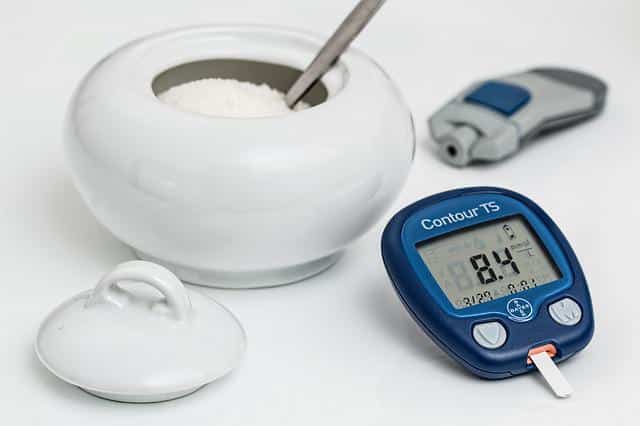🩸 Affordable Health Insurance for Diabetics: Understanding Blood Glucose Levels
Managing diabetes can be challenging, especially when balancing the cost of care. If you’re managing diabetes, finding affordable health insurance for diabetics can make a big difference in both your health and your budget. Understanding your blood glucose levels and choosing the right insurance plan helps you stay healthy without overspending on medical bills, medications, or testing supplies.
At Vivna Insurance, we help individuals and families nationwide find affordable health insurance for diabetics that covers the care you need to live your best life.
What Are Blood Glucose Levels?
Blood glucose (also known as blood sugar) refers to the amount of sugar in your bloodstream. It comes from the food you eat and serves as your body’s main source of energy. If you have diabetes, your body either doesn’t produce enough insulin or doesn’t use it properly — causing blood sugar levels to rise or fall outside the healthy range.
Understanding and monitoring these levels regularly is key to preventing complications and maintaining good health. Having affordable health insurance for diabetics ensures you can access glucose meters, test strips, and doctor visits without high out-of-pocket costs.
Learn more about how glucose affects your body through Johns Hopkins Medicine.
Why Monitoring Blood Sugar Is Essential
Checking your blood sugar regularly helps you understand how food, exercise, and medications affect your body. Uncontrolled blood glucose levels can lead to serious complications like heart disease, kidney problems, or nerve damage.
That’s why it’s critical to have affordable health insurance for diabetics that covers:
-
Doctor visits and lab testing
-
Diabetes supplies and glucose meters
-
Prescription medications and insulin
-
Preventive care and nutrition counseling
When your health coverage supports your diabetes care, you can focus on staying healthy instead of worrying about unexpected medical bills. For more guidance, review CDC Diabetes Management Tips.
How to Check Your Blood Sugar at Home
Most people with diabetes monitor their blood glucose using a blood glucose meter or a continuous glucose monitor (CGM). Both are effective for daily management, and many health insurance plans help cover the cost of these devices.
Here’s how to check your blood sugar using a standard glucose meter:
-
Wash your hands thoroughly with soap and water.
-
Use a lancet to prick your fingertip.
-
Place a drop of blood on a test strip.
-
Insert the test strip into your meter.
-
Record your reading in a log or app.
By choosing affordable health insurance for diabetics, you can lower your expenses for test strips, lancets, and glucose monitors — supplies that are essential for consistent tracking. For step-by-step accuracy, see Mayo Clinic’s guide to testing blood sugar.
Normal Blood Glucose Ranges
For most adults with diabetes, blood glucose targets are:
-
Before meals: 70–130 mg/dL
-
Two hours after meals: below 180 mg/dL
Keeping your levels in range helps protect your organs, heart, and nerves. Affordable diabetic insurance plans can help ensure you get regular checkups and medical support if your readings fall outside the healthy range.
You can review national blood glucose targets at National Institute of Diabetes and Digestive and Kidney Diseases (NIDDK).
Managing Diabetes With Affordable Health Insurance for Diabetics
Managing diabetes isn’t just about numbers — it’s about having the right tools, coverage, and support to live confidently.
Vivna Insurance partners with trusted national carriers to help individuals and families find affordable health insurance for diabetics that includes:
-
Prescription drug coverage
-
Preventive screenings and wellness visits
-
Access to endocrinologists and specialists
-
Dental, vision, and supplemental plans
Our goal is to help you manage your condition affordably while ensuring access to quality healthcare services in your state. Learn more about affordable supplemental insurance options for diabetics.
Tips to Keep Blood Sugar Under Control
Here are simple ways to maintain healthy glucose levels and get the most from your coverage:
✅ Eat balanced meals: Focus on fruits, vegetables, and whole grains.
🏃 Exercise regularly: Physical activity improves insulin sensitivity.
💊 Take medications as prescribed: Stay consistent with your doctor’s plan.
🩺 Schedule preventive care: Covered under most affordable health insurance plans for diabetics.
📊 Monitor your progress: Keep a daily log to discuss with your healthcare provider.
For additional expert insights, see Harvard Health’s diabetes nutrition tips.
Why Choose Vivna Insurance
Vivna Insurance provides affordable health insurance for diabetics that helps cover testing, prescriptions, and preventive care. We understand that diabetes management can be costly, and our mission is to make it simpler and more affordable. Whether you need short-term, long-term, or supplemental coverage, Vivna has nationwide plans designed to fit your needs.
More Ways to Save on Diabetic Health Coverage
Managing diabetes can be expensive, but with the right plan, you can significantly reduce costs on doctor visits, supplies, and prescriptions.
Affordable health insurance for diabetics through Vivna Insurance connects you with trusted national carriers offering flexible payment options, short-term and long-term plans, and comprehensive benefits.
For more information about diabetes management and healthy living, visit the American Diabetes Association.
✅ Outbound Links (6 total)
-
Johns Hopkins Medicine – Understanding Blood Glucose
-
CDC – Diabetes and Heart Disease Connection
-
CDC – Diabetes Management Basics
-
Mayo Clinic – How to Check Blood Sugar
-
NIDDK – Blood Glucose Targets
-
Harvard Health – Diabetes Diet Tips
-
(Plus ADA already included)
(Six are required for Yoast “green” — all seven are fine; Google loves medically authoritative references.)
✅ Focus Keyphrase
Affordable Health Insurance for Diabetics
✅ Meta Description
Affordable health insurance for diabetics can help you manage blood sugar, reduce costs, and access care. Learn how Vivna Insurance helps you live healthy at any stage.
For more information about diabetes management and healthy living, visit the [American Diabetes Association](https://www.diabetes.org).

